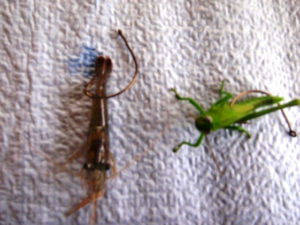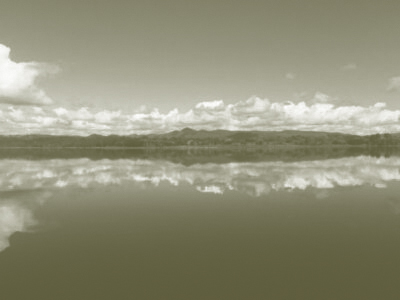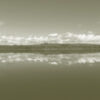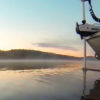Introduction
This article covers basic bait fishing and is aimed at bass, golden perch and silver perch in impoundments, rivers and creeks. These days a lot of fisher-persons bypass bait fishing and go directly to lure fishing, not realising what fun they are missing out on. In the good old days, it was a matter of dropping bait down and waiting for a bite. These days we have modern technology to help, just like the lure fisher-persons have. These include but are not limited to, electric motors and sounders. Some people only lure fish, some only fly fish and others only bait fish but why not enjoy them all
Types of bait used
Before gathering or using any type of bait always be aware of fisheries rules. These could be different state by state.
Live Shrimp: This is by far the most popular of all. Usually rigged with a hook through the third segment from the tail, allowing the shrimp to move about. Do not hook between segments as it makes it easier for the fish to steal the bait. Do not hook through the middle of the back or the shrimp will die quick. Also it pays to remove claws as the shrimp tend to hang onto the line and won’t move to attract the fish.
Worms: One or more worms on a hook make for a juicy meal for a fish. Worms work well if fished over newly flooded grassy areas. In dams where there is plenty of food like bony bream, the fish are not that keen to bite on them. They also attract catfish and turtles.
Insects: Insects work well in impoundments with minimum live bait fish available. Also work well in rivers and creeks. Insects may include grasshoppers, dragonfly, cicadas, beetles and even spiders. These can be rigged by putting the hook through the base of the wings or very lightly through the body so as not to kill the bait.
Live Bait Fish: Small bait fish can be rigged by hooking the hook through the upper back area so as not to kill your bait.

Tackle
Rods: Rods are a personal choice item, some prefer spin rods others bait casters, some prefer light and others prefer heavy. With light rods 1 to 3kg or 2 to 4kg it is easier to detect a bite but sometimes harder to get your rod out of the rod holder and play the fish. With heavier rods, it is harder to detect a bite but easier to get out of the rod holder and fight the fish.
Rod Holders: Locked in type are suitable for trolling, quick release are more suitable for bait fishing. With the quick release rod holder, when you have a fish pulling down on your line it is easier to lift your rod out of the holder in one quick upward movement.

Reels: Once again personal choice. For the species mentioned any brand of reel from 1000 size to 4000 could prove successful. Some people like to spend a lot of money while others not so much. Whatever you can afford and makes you feel comfortable and confident can work. Bait runner reels can also be used. If using rods behind you in a boat make sure you get a reel with a loud ratchet. Also be aware that dams and creeks have some monster rod breakers and reel destroyers in the form of large eels, fork tail catfish, turtles and huge carp.
Line: Choice of braid or mono, light or heavy. If using braid it pays to have a leader of fluro carbon line. With the main line if using a very light line you have to watch out you don’t play the fish too long or you will stress it, especially with the golden perch. You can start with a 4kg braid and an 8kg leader. Then adjust up or down depending on where you are fishing. Some dams have big fish and require heavy lines to be used while creeks have smaller fish so you can use very light line and leader.
Hooks: It pays to avoid using small J style hooks, bait holding hooks or stainless steel hooks when bait fishing as small hooks get lodged in the fish’s throat and removal may kill the fish. Stainless hooks take longer to break down if the fish gets free. Wide gape hooks are the best by far for fresh water fishing; most hook ups are in the corner or roof of the mouth.
Rigs
There are hundreds of different rigs that can be used for bait fishing. We will cover some of the most used ones for fresh water.
Paternoster: This rig is a type of paternoster rig. It has a sinker on the bottom, approx 40cms line, a wide gape hook either on a dropper or tied directly to line, another 25cms line tied to a swivel at the top. These can be tied in advance, and then attached when needed. Remember check the state fisheries rules. E.g. in Queensland only one hook is allowed in fresh water.
Drifter: The drifter or slow sinking rig is an unweighted rig with shrimp attached to the wide gape hook on the bottom. Cast out as far as needed and let it slowly sink through schooling fish.
Bottom Hopper: This rig is similar to a bream rig. Hook on the bottom, a meter of leader or mono, swivel, then above the swivel whatever size sinker required. The idea of this is to either leave on the bottom or hop it along. Each time you hop, the bait is lifted up and slowly sinks back to the bottom.

Under float: There is a multitude of floats available for fishing. Google fishing floats and you will be amazed. We will cover two types here.
Spring loaded ball shaped float: These are usually red and white plastic or foam floats with a spring loaded wire clip each end. They can be adjusted up and down the line to required depth. You are limited to a depth no greater than the length or the rod being used. With hook on bottom, some split shot 20cms above and float adjusted to depth required, you can cast out, let it sit or bob it up and down to attract the fish. Good for creeks, rivers or dams but depth limited.
Blackfish Style Float: This float looks like a stick with a fat belly in the middle. It also has wire loops each end that the line passes through. This float can be rigged to fish shallow as well as deep, with the hook on the bottom, split shot 20cms up the line, float attached to the line above this and rubber grommet set at what depth you wish to fish at. By using the rubber grommet above the float set to your required depth, say 4 meters, you can wind your float up to the end of your rod for easy casting. When you cast, the grommet, should be small enough to pass through the runners of your rod unless they are very small, then when the float hits the water, the split shot pulls the bait down until the grommet touch’s your float.

Where to Fish
You can fish the same places you can use a lure.
Impoundments: Look for drop offs, break lines, spur lines, points, structure, like trees, underwater logs, bridges, weed edges, also keep an eye on your sounder for schooling fish and watch for birds working.
Creeks and Rivers: Same as above plus undercut banks, deep holes, back eddies and where rapid water runs into deep. To find the drop offs in creeks or dams when land based, you can attach a small sinker to a line cast out and count down until it hits bottom then cast to a different spot and so on until you work out where the drop off is or watch your float. If it is not standing up, it has either hit bottom or weed.
Weather
Weather plays a big part in having a good or a bad days fishing. We have to take into account the wind, rain, sun, overcast conditions and barometer. Its sometimes impossible to line all these elements up at the same time. If we could we would have no excuse s for bad days.
Wind: A slight breeze when fishing from a boat is welcome as it helps the boat to yaw from side to side while anchored and keeps the bait moving. It also puts a ripple on the surface which gives the fish a bit of cover to move about in, especially in shallow water, like back waters, creeks and eddies. Wind can also be used to your advantage when casting. Keep the wind behind you and you can put in some long casts.
Rain: Approaching storms or rain and the first couple of days of rain are usually okay for bait fishing.
Overcast Conditions: These are good days, for fishing back waters, creeks and eddies as long as the barometer is not too low.
Barometer: The old saying of “1020 bass a plenty” is not always true, as I mentioned before, it’s a case of trying to line up as many of the elements on your side as you can. A rising barometer is usually good, a steady barometer is usually fair and a dropping barometer is poor, but if you have most of the elements on your side, you can catch fish anytime.
Sun: Fish tend to bite better during the low light times of the day or night. Dawn and dusk are better than the middle of the day when the sun is bright.
Moon: From 4 days before the full moon to the day after the full moon, fishing is fair, from 3 days before new moon to 3 days after new moon, fishing is good. This data came from a fishing magazine.
Summary
Once again please check with rules and regulations in your state before fishing. Also remember this article is for BASIC fresh water fishing with bait. To include all items pertaining to this type of fishing would involve this article becoming an encyclopedia.
Questions to ponder:
Q1:
Is fly fishing superior to bait or lure fishing
Is bait fishing superior to fly or lure fishing.
Is lure fishing superior to bait or fly fishing.
Enjoyment is there to be gained by all styles of fishing. I know I do.
Q2:
If a fresh water bait fisherperson takes his catch home he is quite often referred to as a meato or freezer filler. What is a saltwater bait fisherperson called that takes his catch home.

Author: Dennis Pearce



